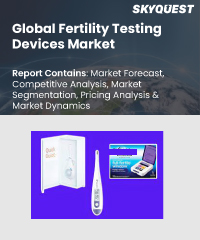
Report ID: SQMIG35A2663

Report ID:
SQMIG35A2663 |
Region:
Global |
Published Date: February, 2024
Pages:
157
|
Tables:
36 |
Figures:
74
The global fertility testing devices market displayed a diverse regional landscape. North America held a significant share, driven by advanced healthcare infrastructure and rising awareness about fertility issues. Europe followed closely with its growing focus on family planning and increasing adoption of fertility tracking technologies. Asia-Pacific showcased rapid market expansion due to a large population base, growing disposable income, and the prevalence of fertility-related concerns. Latin America and the Middle East & Africa experienced steady growth as healthcare access improved and cultural stigmas surrounding fertility testing decreased.
Our industry expert will work with you to provide you with customized data in a short amount of time.
REQUEST FREE CUSTOMIZATIONWant to customize this report? This report can be personalized according to your needs. Our analysts and industry experts will work directly with you to understand your requirements and provide you with customized data in a short amount of time. We offer $1000 worth of FREE customization at the time of purchase.

Report ID: SQMIG35A2663